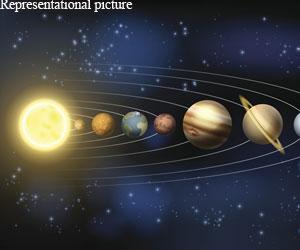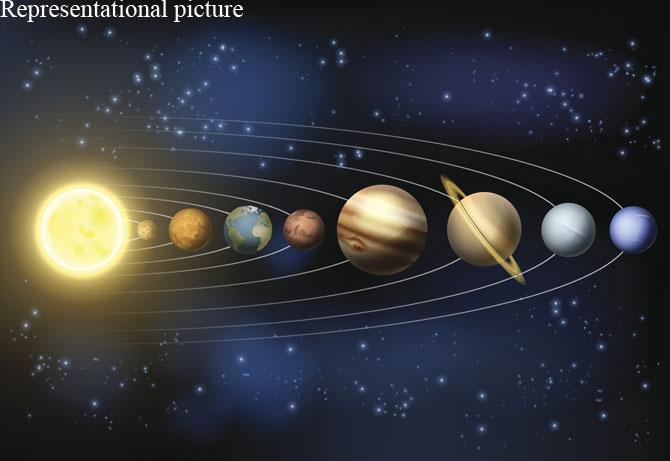Planets around the faint red star TRAPPIST-1, just 40 light-years from Earth, may host significant amounts of water, scientists say


ADVERTISEMENT
Geneva: Planets around the faint red star TRAPPIST-1, just 40 light-years from Earth, may host significant amounts of water, scientists say.
The TRAPPIST-1 planetary system was first detected in 2016. Last year, further observations showed that there are at least seven planets in the system, each roughly the same size as the Earth. These are named TRAPPIST-1b, c, d, e, f, g and h, with increasing distance from the central star.
Scientists led by Simon Grimm at the University of Bern in Switzerland have now applied very complex computer modelling methods to all the available data and have determined the planets' densities with much better precision than was possible before.
"The TRAPPIST-1 planets are so close together that they interfere with each other gravitationally, so the times when they pass in front of the star shift slightly," said Grimm. "These shifts depend on the planets' masses, their distances and other orbital parameters," he said. "With a computer model, we simulate the planets' orbits until the calculated transits agree with the observed values, and hence derive the planetary masses," he added.
The measurements of the densities, when combined with models of the planets' compositions, strongly suggest that the seven TRAPPIST-1 planets are not barren rocky worlds, researchers said. They seem to contain significant amounts of volatile material, probably water, amounting to up to five per cent the planet's mass in some cases. By comparison the Earth has only about 0.02 per cent water by mass, researchers said.
TRAPPIST-1b and c, the innermost planets, are likely to have rocky cores and be surrounded by atmospheres much thicker
than Earth's. TRAPPIST-1d, meanwhile, is the lightest of the planets at about 30 percent the mass of Earth. Scientists are uncertain whether it has a large atmosphere, an ocean or an ice layer. TRAPPIST-1e is the only planet in the system slightly denser than Earth, suggesting that it may have a denser iron core and that it does not necessarily have a thick atmosphere, ocean or ice layer, researchers said.
It is mysterious that TRAPPIST-1e appears to be so much rockier in its composition than the rest of the planets. In terms of size, density and the amount of radiation it receives from its star, this is the planet that is most similar to Earth.
TRAPPIST-1f, g and h are far enough from the host star that water could be frozen into ice across their surfaces. If they have thin atmospheres, they would be unlikely to contain the heavy molecules that we find on Earth, such as carbon dioxide.
"It is interesting that the densest planets are not the ones that are the closest to the star, and that the colder planets cannot harbour thick atmospheres," said Caroline Dorn, from the University of Zurich in Switzerland.
Catch up on all the latest Mumbai, National and International news here
Download the new mid-day Android and iOS apps to get updates on all the latest and trending stories on the go
 Subscribe today by clicking the link and stay updated with the latest news!" Click here!
Subscribe today by clicking the link and stay updated with the latest news!" Click here!






